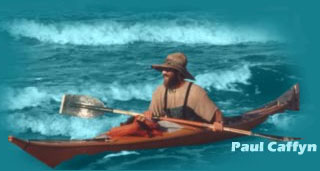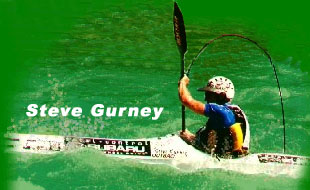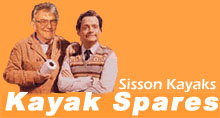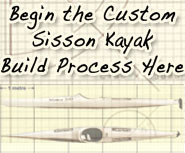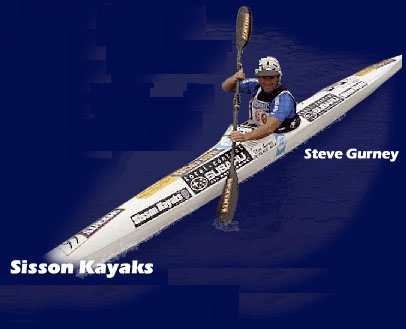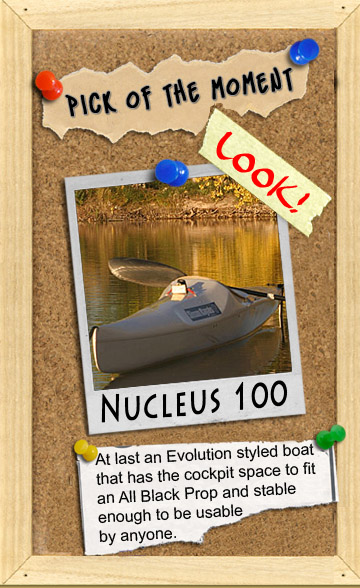About Sisson Kayaks
How it all began!
Believe it or not – this business was formed in 1974 to manufacture specialised equipment to preserve timber. This preservation machinery was by value 95% metal and 5% fibreglass. The original fibreglass ‘workshop’ started out as a very small workbench with a powered revolving mandrel in the centre. Our initial entry into fibreglass was very small in all ways – but very highly mechanised. These fibreglass timber preservation parts were subjected to test pressures up to 300psi. They had to be very strong.
In the spring of 1966 Grahame was introduced to river kayaking by Alan Eskrick, a Nelson Ski Club friend who had moved from Martin (true home of modern kayaking in NZ) with two folding PBK kayaks, of his own manufacture. What a terrifying and satisfying day we had on the snow-melt fuelled Wairau! I have the photos to prove it.
Following that trip, about twelve Nelson Ski Club members were energised to make their own PBK folding kayaks. These kayaks have many timber dowels that need resizing to fit the connecting tubes. My metal lathe was covered in wood shavings. Then I moved to Masterton and I took up hydroplane racing for five years. Repairing the hydroplane cowlings lead me to polyester fibreglassing skills.
Tradesmen painting my neighbours home in 1974 smelled the polyester resin used in the make the timber treatment equipment. They were “canoeists”. They followed the smell – and soon a modern fibreglass kayak ‘plug’ was made available to me.
This very first fibreglass Lettman Slipper kayak was made as a “hobby” in 1975. It was sold (by my workshop landlord) the same evening it was finished – before we had the opportunity to return to test it. By 11am the next day we held nine forward orders for these German designed kayaks. Lettmen had gifted the design to the nation following the 1973 Commonwealth Games in Christchurch. This was in all ways the accidental business venture! I have yet to decide to become a kayak manufacturer.
Alongside the continuing metal work production the kayak and open canoe range was rapidly expanded.
By late 1976 we had developed the revolutionary compact Gap One kayak that later swept the world as Anne Dwyer’s Kiwi Kayaks Minnow. Click here to view more about Anne and her amazing kayak-industry changing business.
By 1977 we were building 7 kayak and open canoe models, including the Nordkapp under a royalty arrangement to VCP in the UK. By mortgaging the family home and importing the Nordkapp mould we started real sea kayaking, as a distinct sport, in New Zealand. Kayak sales and exports boomed and the fibreglass business expanded into aircraft and motorbody parts. The timber preservation business still continued. Then one morning it all stopped. Our leader had placed sales tax on boats (20% on wholesale), motorbody parts (33.3% on wholesale) and aircraft parts (50% on wholesale).
About the same time a horrible kayaking disaster occurred on the Aorere River in Golden Bay. Two of my customers died – and several of my staff were amongst the survivors. The river was in full flood and we all had a new understanding of the way a river current works. Ever since I have always recommended wider kayaks for beginners – because those who stayed in their kayaks that horrible day – survived.
The whole Sisson Industries Ltd business imploded totally by early 1980 – and we only-just survived by making tanks, hoppers and other farming related items. This agricultural business died instantly when farming subsidies were removed in 1984 – but that selective sales tax was replaced by GST on everything. Fairness at last. What to do – we employed a business consultant. Their report was to get back into manufacturing kayaks – and rename the business to reflect the description used by our customers to advertise their used kayaks. It came hard to drop the old Wildwater brand in favour of the new (yuk) Sisson Kayaks brand.
We branched into Down River Racing (DRR) kayaks and they sold by the trailer load to an outdoors store in Christchurch. The ‘secret’ market that they had found was the Lion Brown Coast to Coast race.
We kept making so many new kayak models. The best was the Delaware (The hull form came from my neighbours house painter) which was used by so many top achieving (good runner and cyclist) Coast to Coast place winners in 1986 and 1987. The Delaware was stable and fast. For my own use I started playing around with a rudder on my own DRR kayak. I loved the ability to use my big toe to correct my course – instead of mighty sweep-strokes.
In 1987 we invented the Multisport Kayak class with the introduction of the Triathlete model at the Norsca Mountains to the Sea race. This model had a Down River Racer hull and merged many features of a sea kayak. By making the Triathlete with a standard rudder we were the first New Zealand kayak manufacturer to commercially specify rudders to all river kayaks.
In 1989 we developed the worlds first double sea kayak with a centre hold, allowing out-of-synch paddling, the Southern Light. We sold hundreds of these super safe kayaks to the rapidly developing kayak hire industry.
In early 1990 we introduced the Evolution Classic, the world’s first ‘long’ racing kayak. The ‘Evo’ -Classic would have to remain the most successful design in multisport. Keith Murray used a Classic to set his 1994 10 hours 34 minutes Speights Coast to Coast record – Keith’s record is still unbroken. Arguably the Evolution Classic is the fastest Multisport Racing Kayak – whilst Keith’s record remains unbeaten as at 2010.
In 1992 we developed the Evolution Edge which is still in 2010 used by highly competitive athletes to win so many multisport races. For years Peter O’Sullivan has been running his race on the Rangeitiki River. He starts his race from the bank – enters his Evolution Edge – passes the field – and welcomes the eighty plus racers past his finish line.
In 2009 we introduced the Evolution Omega – the first production racing kayak to be fitted with the ancient Inuit invention – the Bifurcated Bow. Gordon Walker and Dougal Alan proved that we have a better boat when they came 1st and second in the 2010 Speights Coast to Coast race.
Much of our sales revenue still comes from our classic range of sea kayaks – those classic proven designs just keep selling. In May 2007 Paul Caffyn took delivery of his latest (split in the middle too fly into Greenland) Nordkapp – exactly 30 years after taking delivery of his first South Island circumnavigation Nordkapp. The properties of wind and water do not change – so these kayaks all work as well as the day they were designed. And the fitout remains the same. It looks terrible in a shop – but sensible on a beach.
THE DEFINING MOMENT THAT WE WOULD NEVER WISH TO RE-VISIT
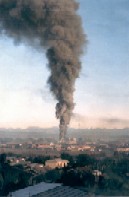
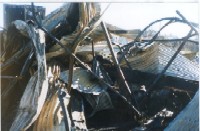
At 8.30am (staff at work) on the 19th June 1996 disaster struck in the form of a large factory fire. Our security monitor in Wellington knew of the smoke in the building 3 minutes before a 111 call was placed. Lynda and I were under a cloud of volcanic ash in Rotorua – heading to our next kayak demo in Tauraunga that evening. Our factory and moulds were all destroyed. Everything except the demo boats. The rebuilding to our former 500-kayaks-per-year capacity was just too hard. The losses were too great. Our staff lost their quality ethic. They lost their jobs. We closed the business down – Grahame was heading into heart attack territory!
Thanks only to the encouragement from our good friend Matsumura, our Japanese agent, we reopened the business again, behind closed doors, to make, as a hobby, his previously ordered container-load of sea kayaks. This was the beginning of the one-man-band low-pressure-zone. This slower paced production turned out to be enjoyable, with more personal focus and zero stress. The kayaks were the best Matsumura ever received. And they were very satisfying to build.
 Cart: 0 item(s)
Cart: 0 item(s)